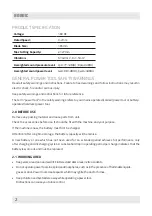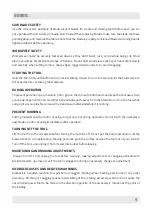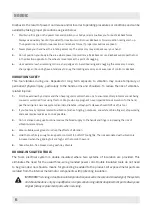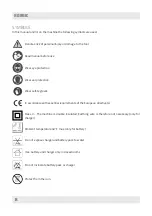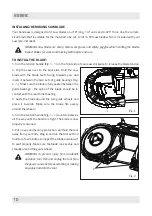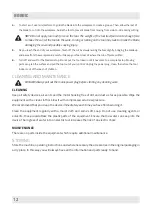
5
NORDIC
SAW BLADE SAFETY
Use the correct size and style of blade. Inspect blades for cracks and missing teeth before each use. Do
not operate with dull, cracked or badly worn blade. When replacing blades, make sure the blade teeth are
pointing down and towards the table. Check that the blade is properly tensioned (blade tensioning handle
tightened down) before operating.
WORKPIECE SAFETY
Workpieces should be securely fastened down so they don’t twist, rock, or slip while being cut. Small
pieces should be secured with clamps or fixtures. Do not hold small pieces with your hand. Work slowly
and carefully when cutting corners, sharp edges, ragged welds, and etc. to avoid snagging.
STARTING THE TOOL
Hold the tool firmly with both hands to resist starting torque. Turn on the tool and let the blade come to
full speed before contacting the workpiece.
DURING OPERATION
To prevent personal injury, maintain a firm grip on the tool with both hands and keep the tool away from
your body. Keep hands, hair and other beloved body parts away from the blade. Do not run the tool while
carrying it at your side. Never leave the band saw unattended while it is running.
PREVENT BURNING
Cutting material and the motor housing can get very hot during operation. Do not touch the workpiece,
saw blade or motor housing immediately after operation.
TURNING OFF THE TOOL.
Lift the tool from the workpiece before turning the machine off. Do not put the band saw down until the
blade comes to a complete stop. Moving parts can grab the surface and pull the tool out of your control.
Turn off the tool, and unplug it from its electrical outlet before leaving
MAINTAINING AND MAKING ADJUSTMENTS
Always turn OFF and unplug the tool before cleaning, making adjustments or changing attachments.
Accidental start-ups may occur if the tool is plugged in during an accessory change or adjustment.
KICKBACK CAUSES AND RELATED WARNINGS
Kickback is a sudden reaction to a pinched or snagged rotating wheel, backing pad, brush or any other
accessory. Pinching or snagging causes rapid stalling of the rotating accessory which in turn causes the
uncontrolled power tool to be forced in the direction opposite of the accessory’s rotation at the point of
the binding.


